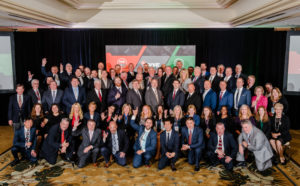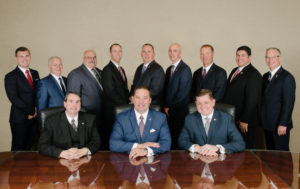Planning and Executing the Perfect Corporate Office Photoshoot
An office photoshoot, often called corporate photography, is a photographic session that aims to capture the essence of a company’s environment, its team, and its daily operations.
Unlike classic professional business headshots that focus solely on individual portraits, office photoshoots provide a broader, dynamic representation of a company. They include individual and group photographs and candid shots of employees, interactions, and the physical workspace. These images can be invaluable for marketing, internal documentation, and enhancing company culture.
Preparing for the Office Photoshoot
Plan With Your Client and Set Goals
Preparation begins long before the camera is unpacked. Start by discussing with your client what aspects of their business they want to showcase. Together, develop a list of essential shots, including types of images like headshots, candid work moments, and team photos. This clarity ensures that the final images align with the client’s vision and objectives.
It’s beneficial to establish a checklist of desired images:
- Headshots: Discuss whether traditional or more modern, casual styles are preferred.
- Candid Working Shots: Capture the natural workflow and employee interactions to reflect the company’s operational environment.
- Group Photos: Plan group compositions in various office settings to portray teamwork and company culture.
- Environmental Portraits: These are portraits of the staff within their work environment, which can provide a deeper insight into the roles and personalities within the company.
Set clear objectives, such as enhancing the company website, improving professional profiles, or creating engaging content for social media. Agree on a shot list and a schedule to ensure the session proceeds smoothly and all key aspects are covered.
Scope Out the Setting

- Assess Lighting Conditions: Identify sources of natural light, potential glare, and the need for additional lighting equipment.
- Choose Backgrounds: Select backgrounds that are on-brand and provide a clean, uncluttered photo backdrop.
- Plan Shot Angles and Compositions: Consider the office architecture and available space to determine the best angles and positions for varied compositions.
If a pre-visit isn’t possible, plan to arrive early on the shoot day to perform these assessments. This proactive approach can mitigate unexpected challenges and optimize photo quality.
Communicate with Team Members
Clear communication with the office staff is key to a smooth photoshoot. Send an email explaining who you are, the purpose of the shoot, and what they can expect. Effective communication with the office staff before the shoot can greatly enhance the comfort and cooperation of everyone involved. Consider these steps:
- Informative Email: Send a detailed email to all employees explaining the purpose of the shoot, the schedule, and any preparation required. Include what to wear, how to prepare their workspaces, and what the photos will be used for.
- Style Guide: Provide a style guide that suggests wardrobe options that reflect the company’s image and the tone of the photoshoot.
- Personal Preparations: Encourage employees to bring personal items that reflect their roles or personalities, which can help capture more personalized and engaging photos.
This communication informs and helps build anticipation and enthusiasm for the photoshoot, ensuring that employees are cooperative and actively participate in creating impactful images.
Introduce Yourself in Person
A personal introduction is crucial on the day of the shoot. When you meet the staff, offer a friendly greeting and an overview of what to expect throughout the day. This reinforces the information previously communicated and helps to:
- Ease Anxieties: Direct introductions can calm nerves and make the staff more comfortable in front of the camera.
- Establish Authority and Approachability: It positions you as approachable yet professional, facilitating easier interaction and cooperation during the shoot.
- Confirm Details: It’s a chance to review the day’s schedule again, ensuring everyone is aligned with the plan.
Personal interactions can significantly enhance the comfort level of those photographed, often resulting in more natural and engaging photos.
Photographing the Space

- Natural Lighting: Use natural light as much as possible, as it often offers the most flattering and soft appearance. This can help in creating more inviting and vibrant images.
- Interior Lighting: Assess the available interior lighting and supplement with professional lighting equipment to avoid harsh shadows or overly bright spots.
- Wide Angles: Use wide-angle lenses to capture expansive shots of the office environment. This is particularly effective for showcasing the workspace’s layout, design, and size.
Photographing the space effectively requires a balance between technical skill and artistic eye, ensuring each photo tells a part of the company’s story.
Make It About the People
Unless specifically directed otherwise, focus on capturing images of the staff. Look for natural interactions in break rooms or during meetings and posed but relaxed moments. For portraits, find spots with the best lighting and backgrounds, using a shallow depth of field to emphasize the subject.
The people are the heart of any organization, and capturing them authentically is vital:
- Candid Moments: Look for opportunities to capture employees naturally engaging with one another. These spontaneous moments can show genuine emotion and connection.
- Quasi-Candid Portraits: Set up scenarios where employees can be photographed in a posed yet natural manner. This can be effective in environments where camera shyness is common.
- Optimal Settings for Portraits: Find locations with the best combination of background and lighting for more formal portraits. A shallow depth of field helps focus attention on the subject, making the individual stand out.
Focusing on people humanizes the business and adds a personal touch to the corporate image, making the company more relatable and appealing to current and prospective clients.
After the Shoot: What Next?

- Editing: Use software like Adobe Photoshop or Lightroom to adjust exposure, color balance, and sharpness to enhance the overall appearance of the photos.
- Feedback: Please share a few edited samples with the client to get feedback. This helps ensure the final images meet their expectations.
- Delivery: Organize and deliver the photos through a professional, easy-to-use digital platform. Ensure the delivery is timely and includes all agreed-upon images.
Post-production is your opportunity to refine the captured moments and highlight the best aspects of the corporate environment and its people.
By following these tips, you ensure that the office photoshoot captures the essence of the business and provides valuable material that enhances the company’s professional image. Whether used for marketing, internal communication, or to boost employee morale, these images serve as a lasting asset for the company.
Emphasizing Value and Lasting Impressions with Jonathan Fanning
Office photoshoots are more than just a series of images. They offer a visual narrative of a company’s brand and culture. These photographs can enhance marketing materials, update website imagery, and boost social media engagement. They provide employees with professional photos that can be used for their career advancement.
Jonathan Fanning’s expertise as a corporate photographer in Tampa, Clearwater, and surrounding areas ensures that each corporate photoshoot captures your office’s professionalism and unique atmosphere. Contact Jonathan Fanning today to discuss how we can help bring your corporate vision to life through photography.

